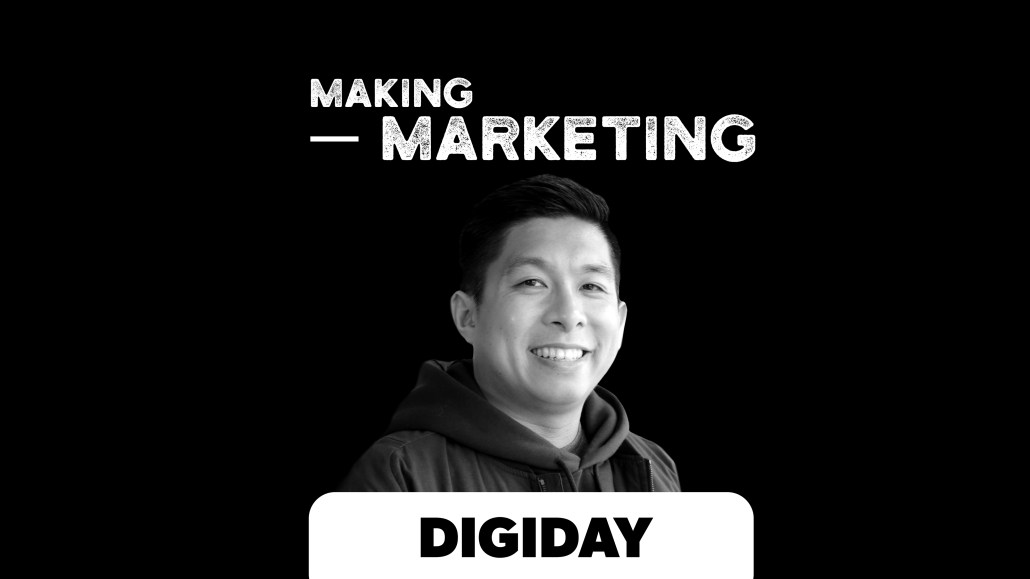‘How Hill City affects Gap Inc. is TBD’: Eric Toda on incubating a brand within a retailer

Subscribe: iTunes | Google Play | Stitcher | RSS | Anchor
Late last year, Gap Inc. launched Hill City, an activewear line that is its version of Athleta, but for men.
It’s also the retail giant’s new opportunity to keep growing in activewear. Eric Toda, head of marketing at Hill City, says the advantages of launching Hill City are to be seen for Gap but in the meantime, there’s a lot Hill City is learning from the retailer.
Created as a “secret brand” within Gap, Hill City only sells on its own site, with some items displayed in about Athleta stores around the country. For now, there are no plans for Hill City to open its own stores.
“Building the brand with Gap meant [Hill City] feels established,” Toda said on the latest episode of Making Marketing. “It wasn’t flopping around. It continues to win. How it affects Gap Inc. is TBD. There’s so many learnings we’re getting right now like how do we change the website, the navigation, placing different products across the site. That will be beneficial. Bigger companies are burying innovation and smaller companies. Gap saw they have leverages internally.”
Host Shareen Pathak sat down with Toda to discuss customer engagement loops, chatbot technology and more. Edited highlights below:
Engaging consumers in the feedback loop.
When we were building Hill City, we thought about what is our point of view in a crowded market and how we should reach our customer and build our brand with them. Many new brands prototype their products [by testing them on] a group of friends. They ask the friends what they liked, what they would change about it. We decided to invite people, getting their feedback and problem-solving with them. Our iterations are better and more comfortable. We have a little under 30,000 applicants [for feedback].
Chatbots are still relevant.
Chatbots never left. It’s about seeing what a practical application of technology looks like versus what’s always been done. Chatbots offer us a lot of scale. They automate a lot of our conversations with our growing community and we can just spot trends. It allows us to scale out our product creation process. People are passionate about giving us feedback.
Instagram is fertile ground for DTC brands.
Instagram is really visual. Storytelling has become more visual than text. I look at the brands that are prolific on Instagram and people are very engaged. When we looked at it, we didn’t want to repurposed TV spots. When we do something on the platform, we do something that we would ourselves. It’s extremely lightweight but that relieves a lot of pressure to engage. You build a presence that is really authentic. Paid [marketing] helps in an acquisition, which is important for any direct-to-consumer brands. But there’s a place for organic, which we also use for acquisition.
More in Marketing

Ahead of Euro 2024 soccer tournament, brands look beyond TV to stretch their budgets
Media experts share which channels marketers are prioritizing at this summer’s Euro 2024 soccer tournament and the Olympic Games.

Google’s third-party cookie saga: theories, hot takes and controversies unveiled
Digiday has gathered up some of the juiciest theories and added a bit of extra context for good measure.

X’s latest brand safety snafu keeps advertisers at bay
For all X has done to try and make advertisers believe it’s a platform that’s safe for brands, advertisers remain unconvinced, and the latest headlines don’t help.







